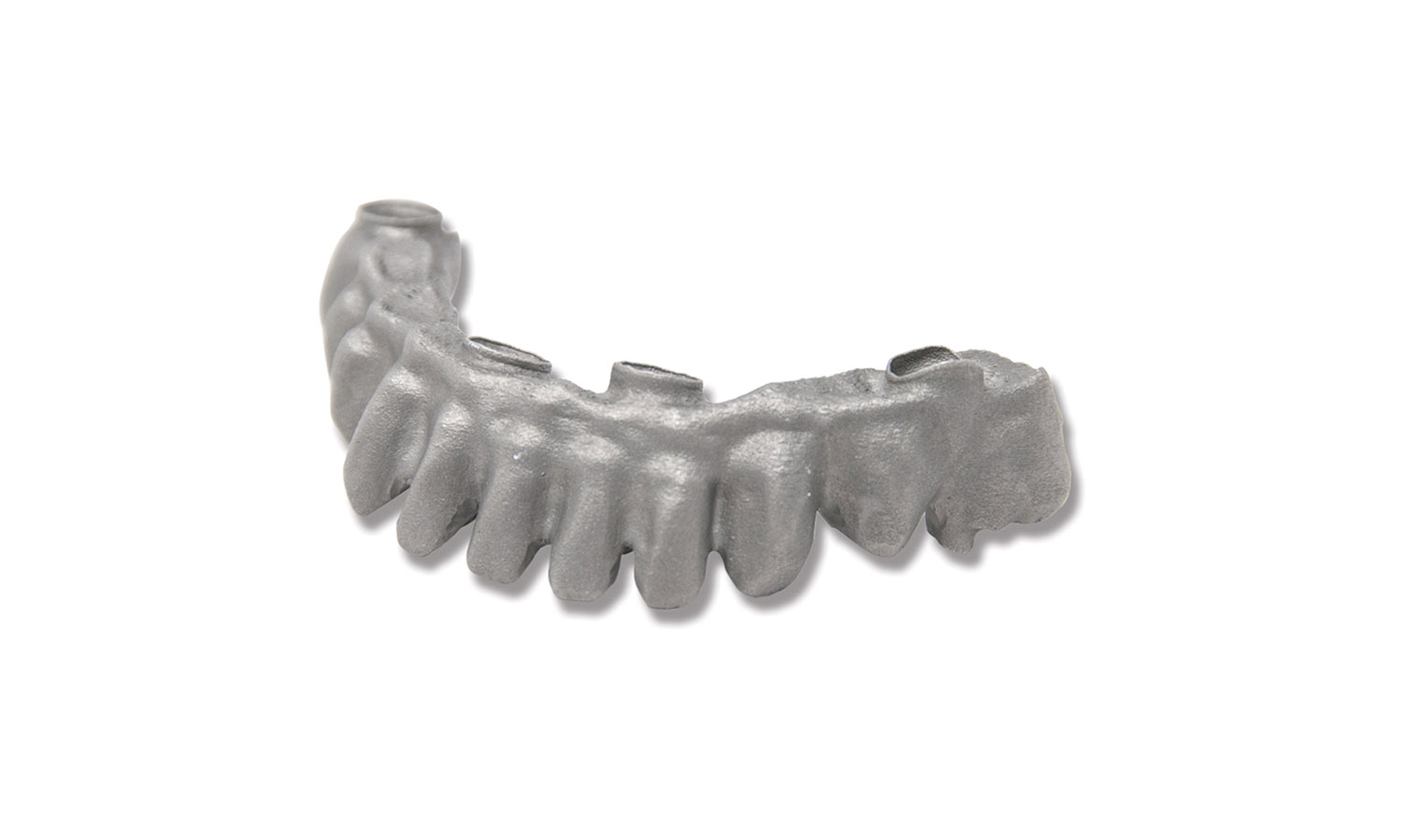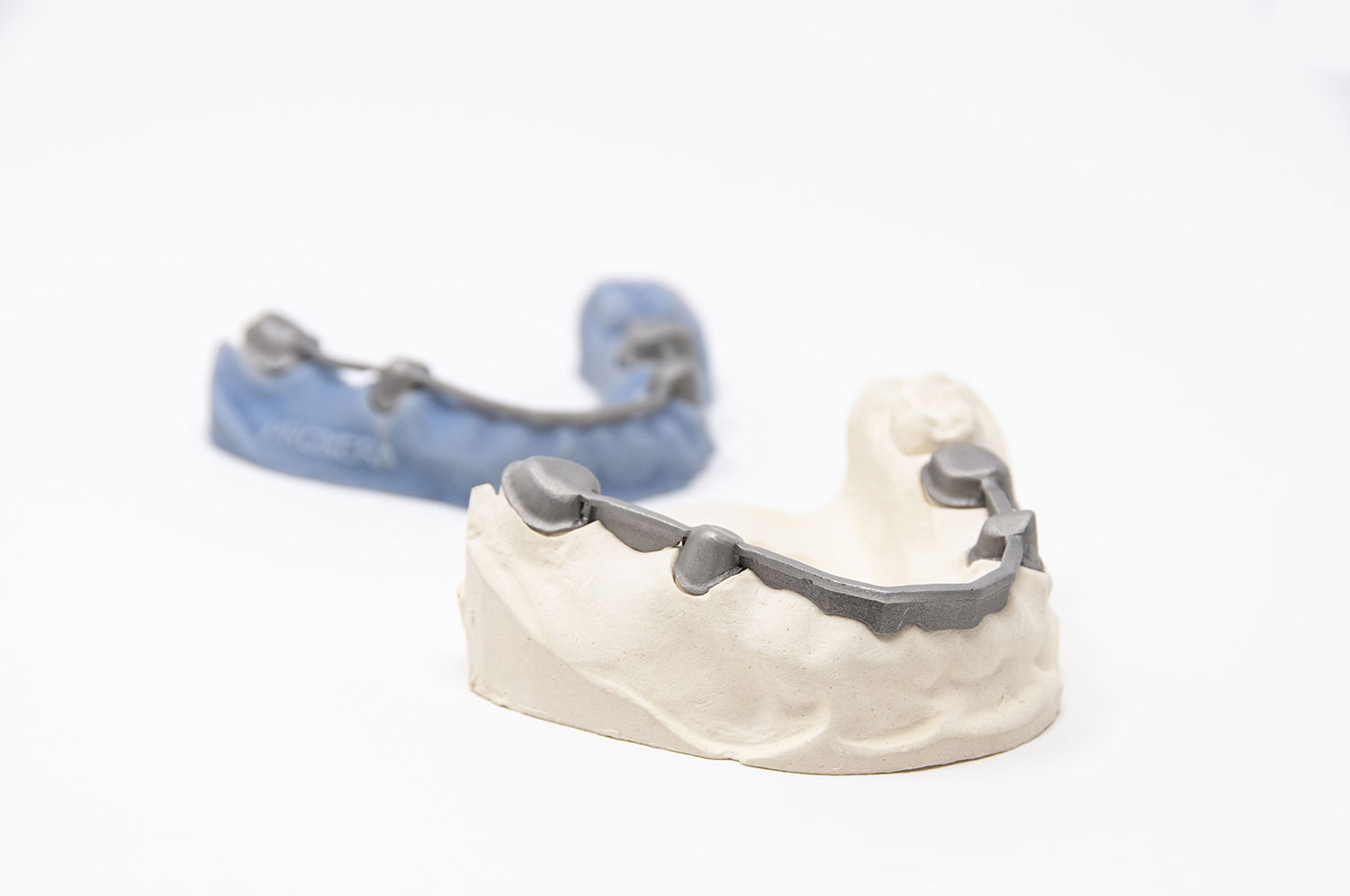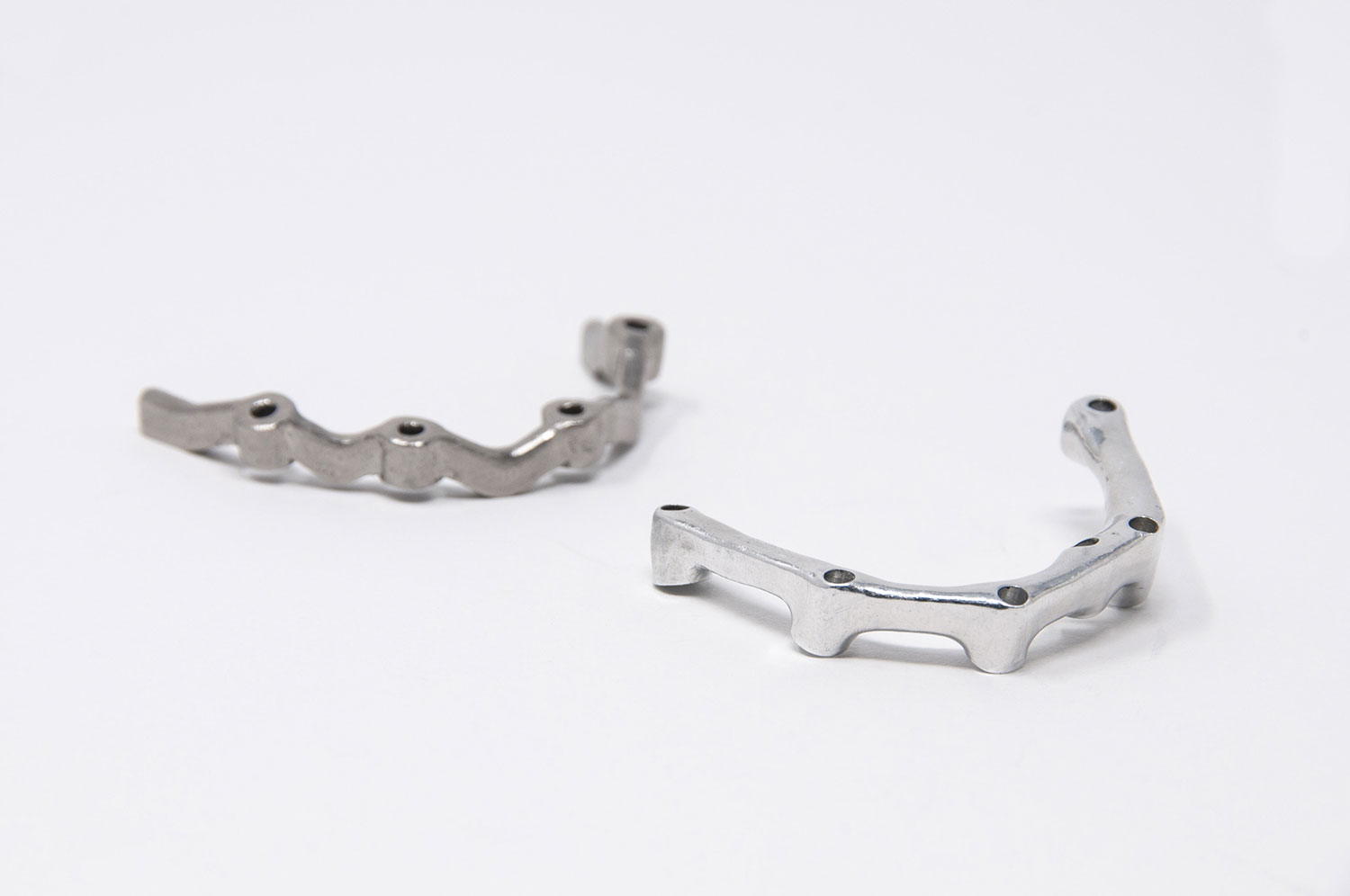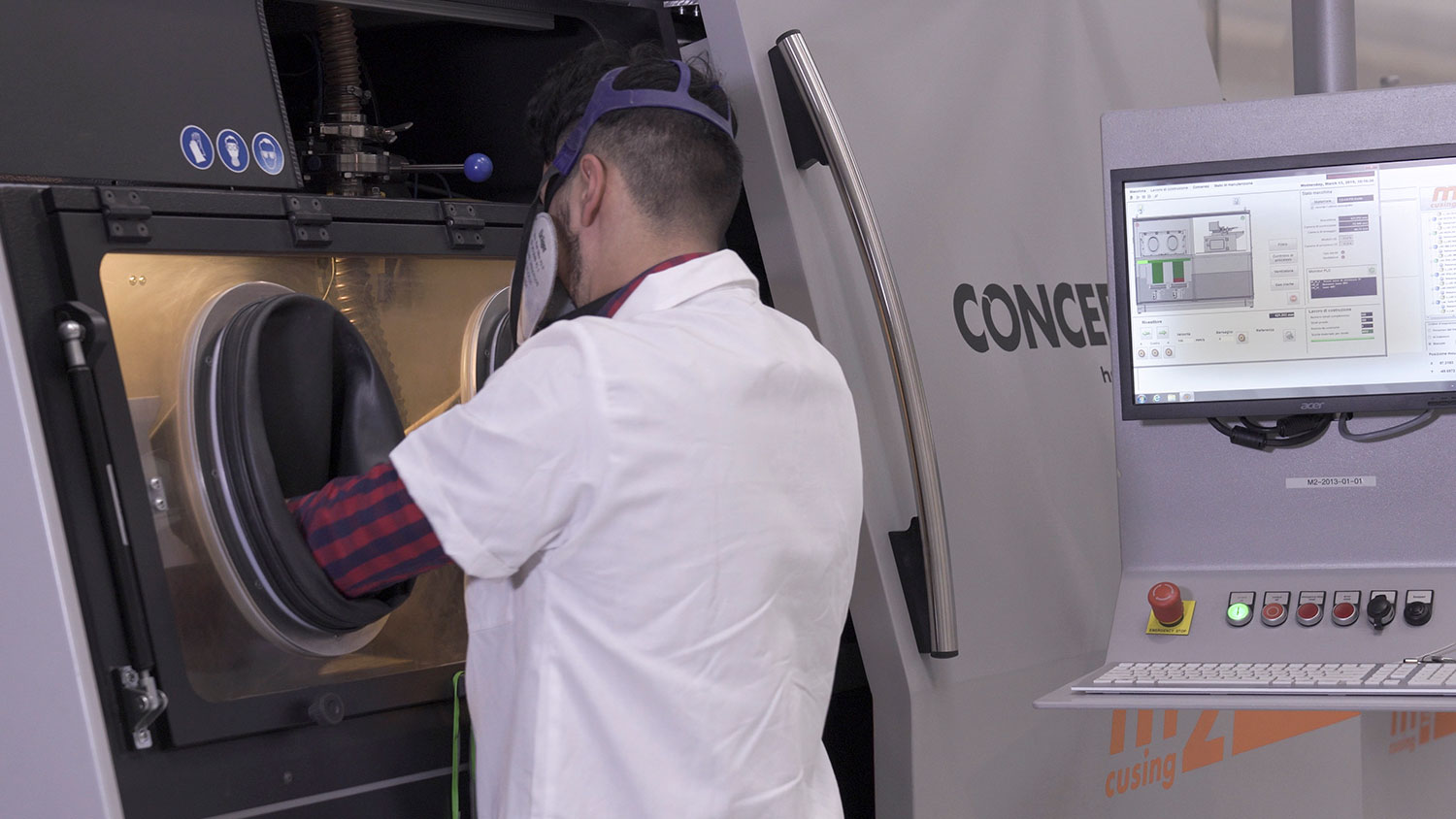-
PHONE
+39 0522 964949 -
PRICE LIST
Ask for the price list
Laser melting technology makes it possible to produce bars that, by connecting the abutments (stump pins or implants), create a removable, but firmly placed, extended prosthesis. The bar, which is custom made, is fixed to the implants and supports the prosthesis allowing to discharge the load even on the mucosa: thus achieving maximum mechanical stability and a full chewing ability combined with a quality esthetic result.

There are different types of bars (square, trapezoidal and also Toronto Bridge with a reduced dental anatomy) that allow different insertions and anchors to mobile prostheses; all types of bars are easily made in laser melting because they are present in the libraries of the most popular design software.

The creation of bars by laser melting is the optimal choice whether you opt for a wire bar, or if you decide to follow the anatomy of the mucosa: in this case it will be possible to assess the optimal reproduction of the ridge. Morpho-functional characteristics will be adapted to the intended use but there will be a significant reduction in production times.
Laser melting also offers consistent, repeatable results, with a high standard of quality. The tolerances achieved by laser melting stratification are perfectly suited to the type of machining.
If we compare a bar in laser melting with one obtained from solid material, we note how these are interchangeable: the level of finishing, surface quality, sturdiness, functionality and possible applications are identical.
Upon designing, however, laser melting bars require a different connection setting.

During the design of bars that will be made from solid material, the implant connection is reproduced directly in mathematic algorithms and then it will be possible to insert any type of connection. The choice of laser melting, on the other hand, leads to a compromise because the use of anti-rotational connections or the insertion of particular geometries are not recommended. Layers, naturally present in laser melting manufacturing, can create interference in connections; for this reason, it is suggested to be careful and use rotational connections, also suitable for the use of T-base.

Choosing laser melting for making bars allows a prosthetic product of the highest quality to be obtained. Moreover, for the dental technician, the design with CAD software is very easy and guarantees absolute precision, time reduction, and lower labor costs.
Proxera® features the advantages of laser melting, previously reserved for industrial sectors, dental practices and dental laboratories. Entrusting Proxera with the manufacture of chromium-cobalt and titanium bars means turning to a specialized and cutting-edge company that combines high quality with extremely fast production times offered by new 3D printing technologies.
© Copyright 2021. All Rights Reserved. Proxera S.r.l. - Via Marchesi, 1 - 42022 Boretto (RE)
C.F. / P.IVA / Reg. Imp. RE 02741880351- R.E.A. 309389- Cap. Soc. € 30.000,00 i.v.a.
Information on the processing of personal data | General terms of sales | Cookies Policy